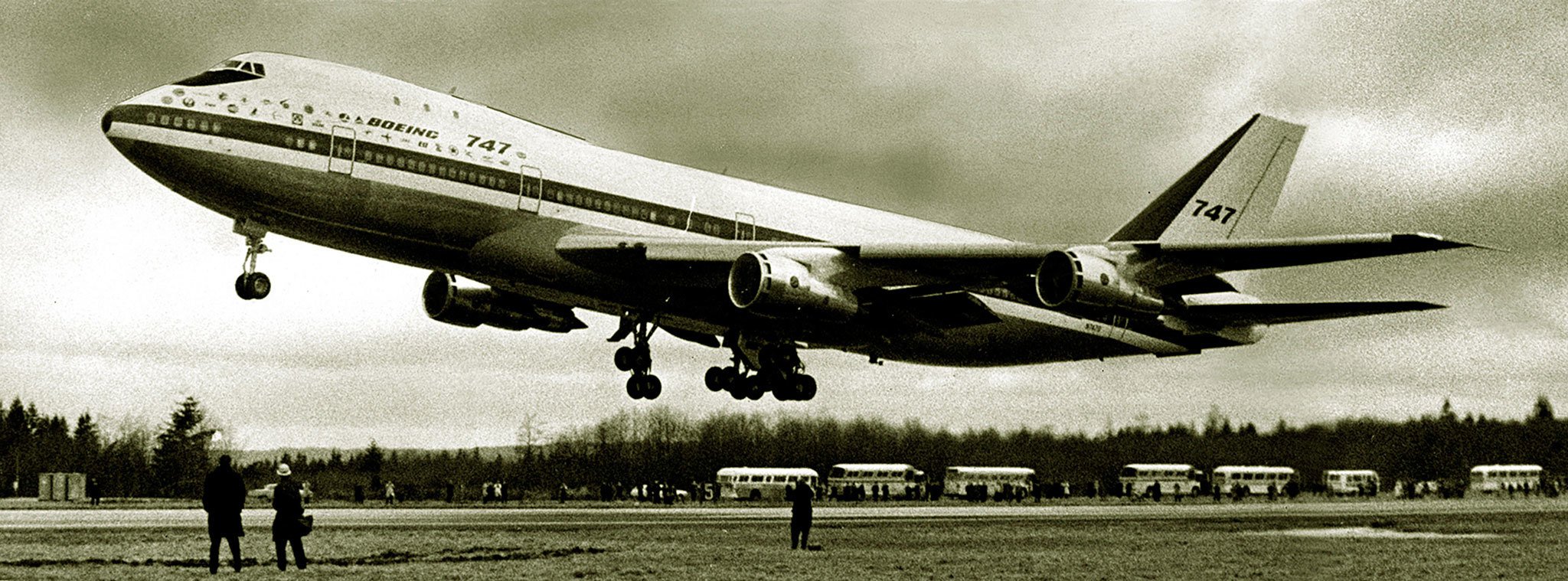The Boeing Co. turned 100 today. Throughout the year, The Daily Herald is covering the people, airplanes and moments that define The Boeing Century. More about this series
1903: Bill Boeing leaves Yale University a year before graduating, and moves to Grays Harbor to get into the timber industry.
1903, December 17: Orville and Wilbur Wright launch the age of powered flight when their propeller-driven biplane takes off near Kitty Hawk, N.C.
1916, June 15: Bill Boeing takes his first plane, the B&W, for its first flight.
1916, July 15: Boeing incorporates Pacific Aero Products Co., which is renamed Boeing Airplane Co. the next year.
1917, August: The Navy orders Boeing’s Model C, a seaplane trainer. It’s the company’s first big order.
1925, July 7: First flight of the Model 40. Designed to carry mail, it is also Boeing’s first passenger plane.
1927: Model 15 fighters are barged to an aircraft carrier in Elliott Bay. In the 1920s, Boeing delivers more fighters to the U.S. military than any other supplier.
1929, February 1: Boeing and Pratt & Whitney create a huge aerospace conglomerate, called United Aircraft and Transportation Corp.
1930, May 6: First flight of the Monomail. It is Boeing’s first commercial monoplane and the first of several early innovative Boeing planes.
1933, February 8: First flight of the Model 247. It’s the first modern airliner; however, Douglas’ DC-2 and DC-3 dominate commercial air travel.
1934, September 18: Embittered over the airmail scandal, Bill Boeing cuts all ties to his company. United Aircraft and Transport Corp. breaks into three companies still around today: Boeing, United Technologies Corp. and United Air Lines.
1935, July 28: First flight of the Model 299 (B-17). Boeing President Claire Egtvedt bet the company on the B-17’s success.
1935, September 23: Thirty-five Boeing workers organize Local 751 of the International Association of Machinists. In 2016, the union represents more than 30,000 at Boeing.
1942, April: The Machinists union gives in to federal pressure to let blacks work at Boeing, but black workers do not receive union benefits.
1944, March 6: Sixty Boeing engineers hold SPEEA’s first meeting.
1944, March 10: The battle of Kansas begins. Hundreds of workers at Boeing’s Wichita plant labor around the clock for several weeks to get the first 175 B-29s into combat.
1945, August 6: The Enola Gay, a B-29, drops an atomic bomb on Hiroshima, killing more than 65,000. Japan surrenders nine days later.
1947, December 17: First flight of the B-47. The advanced jet bomber is a huge boost for Boeing, which lost money in 1946 and 1947.
1949, July 27: The Jet Age begins when the De Havilland Comet, the first commercial jetliner, makes its first flight.
1955, August 7: Boeing test pilot Tex Johnston barrel rolls in the company’s new jetliner prototype, the 367-80, over Lake Washington during Seafair. The plane, better known as the Dash 80, first flew on July 15, 1954.
1957, December 20: The 707’s maiden flight. It outsells all competitors by wide margins.
1966, April 13: Boeing announces plans to build the 747, the first wide-body jetliner.
1969, February 9: First flight of the 747. Its development costs nearly bankrupt the company.
1971, April 16: A billboard goes up for 15 days reading “Will the last person leaving Seattle — turn out the lights?” The sign was meant as a joke, but it captured the region’s mood.
1974, May: Airbus’ first jetliner, the A300, enters service with Air France.
1978, October 24: The Airline Deregulation Act of 1978 is signed into law. It allows direct competition between airlines and spurs the rise of low-cost carriers. It also helps create huge demand for single-aisle airplanes.
1980, May 18: Mount St. Helens erupts, killing 57.
1981, September 26: First flight of the 767. The 757 follows five months later.
1990, March 28: Boeing’s 737 becomes the world’s best-selling jetliner when United takes the 1,832nd 737.
1994, June 12: First flight of the 777. It’s Boeing’s biggest twinjet and the first entirely designed on computers.
1996, December 15: Boeing announces plans to buy McDonnell Douglas for $13.3 billion. The deal becomes official Aug. 1, 1997.
1997, February 9: First flight of the 737 Next Generation. The Next Gen variants are Boeing’s response to Airbus’ A320, which first flew in 1988.
1997, October 3: Boeing temporarily halts 737 and 747 production due to supply chain problems.
2000, March 17: SPEEA and Boeing reach a tentative deal, ending a 38-day strike.
2001, March 21: Boeing announces plans to move its headquarters out of Seattle, settling?on Chicago.
2003, December 19: Following a nationwide site search, Boeing says it will assemble the 787 in Washington, which offered an estimated $3.2 billion in tax breaks. The plane brings less work than earlier ones due to greater outsourcing to suppliers.
2005, June 30: James McNerney, head of 3M, is selected to run Boeing. The prior two CEOs — Harry Stonecipher and Phil Condit — both resigned amid separate ethics scandals.
2009, October 28: Boeing says its second 787 line will be in South Carolina. The move is motivated in large part by that state’s anti-union sentiment.
2009, December 15: First flight of the 787. It is more than two years late.
2011, September 25: Boeing delivers the first 787 to launch customer All Nippon Airways.
2014, January 3: Machinists narrowly approve a new contract, ensuring the 777X will be built in Everett. Boeing had threatened to take the work out of state without a labor deal. The state offered tax breaks worth an estimated $8.7 billion.
2016, January 29: First flight of the 737 MAX.
2016 May 20: Boeing opens a $1.2 billion addition in Everett to make the 777X’s advanced wings.
Talk to us
> Give us your news tips.
> Send us a letter to the editor.
> More Herald contact information.

























